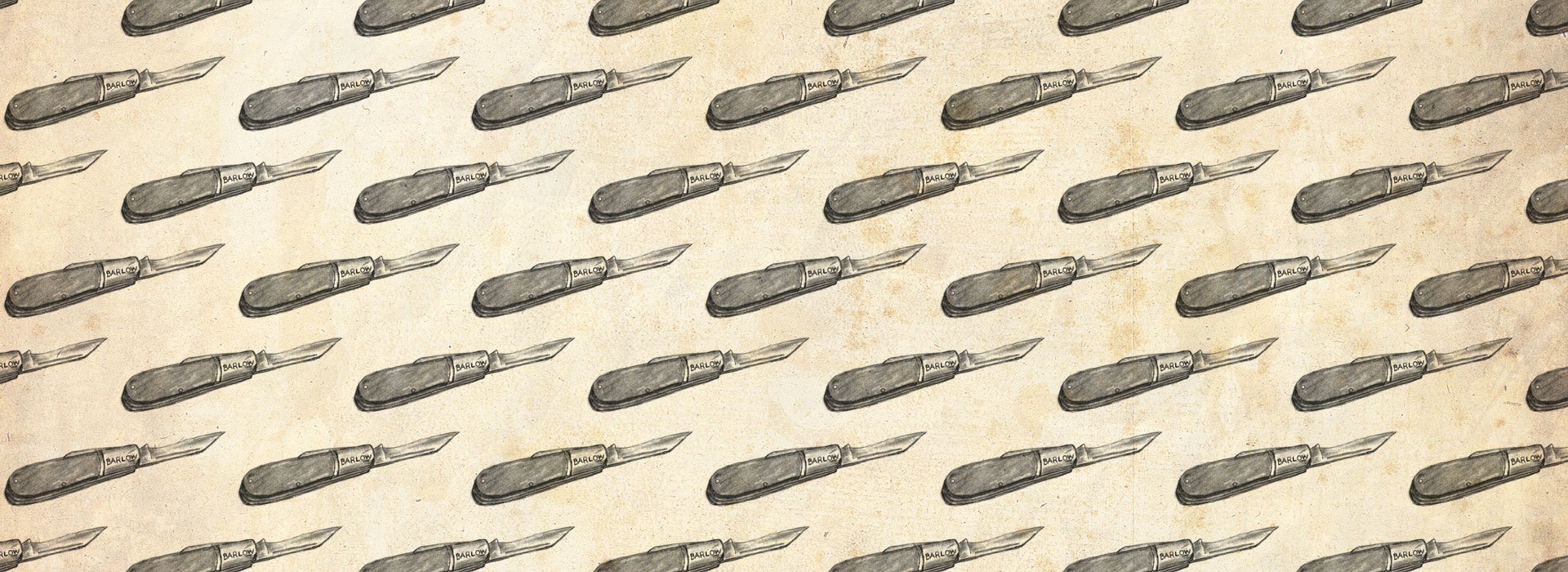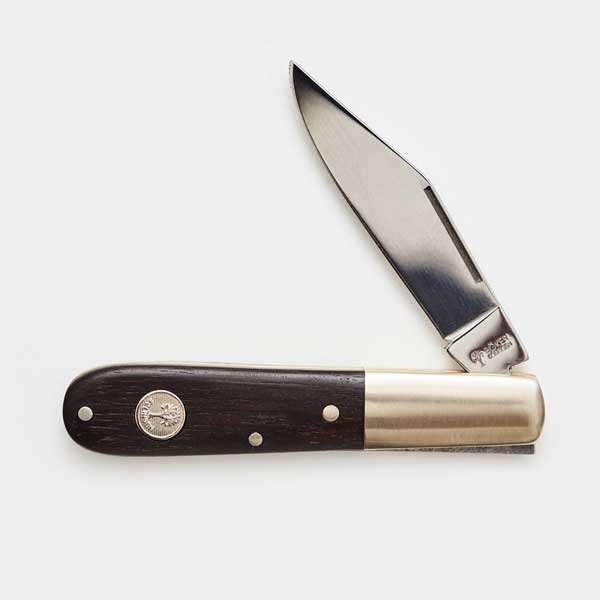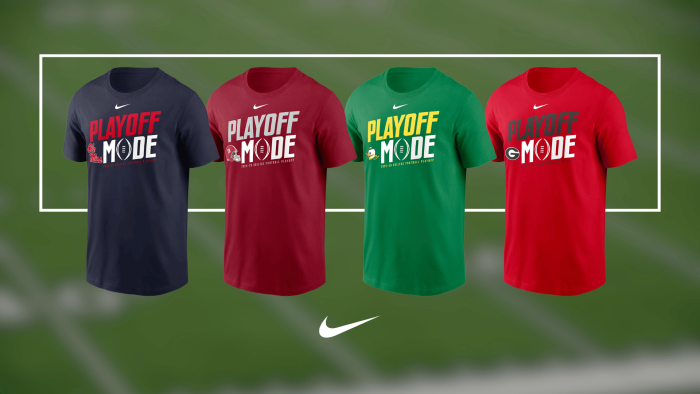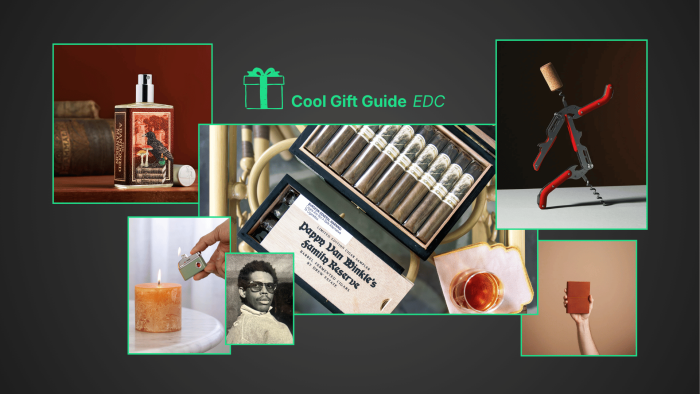Players in the pocket knife industry are constantly trying to build a better, more durable, more versatile knife and, in the interest of fairness, we think they’re doing a pretty good job. Every year knives in a dozen different price ranges are released, each of them making full, punishing use of their blade types, locking mechanisms, and build materials. But the John Russell Cutlery Company nailed it all the way back in 1785. The Barlow Knife has been a classic part of America’s EDC since before people thought the Constitution would work.
For the uninitiated, the Barlow is a specific style of pocket knife. It’s one of the least complicated, with either one or two folding blades and usually undecorated handles. The blade type is usually a pen knife blade, as the original Barlows were meant as everyday tools, not weapons, and they were built to outlast the person who bought them while still only costing them a handful of coins.
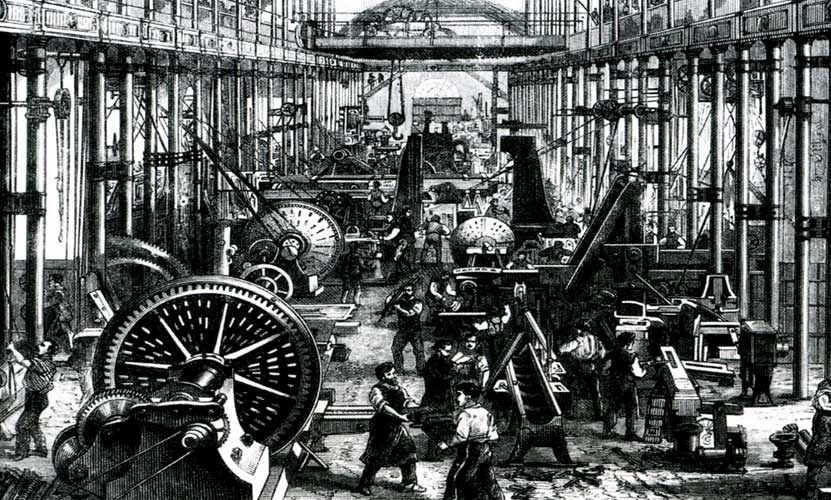
Overseas Origin and a Proud American Adoption
The history of the knife has to start with a little transparency. The classic all-American knife isn’t all-American. It’s English, at least to start.
Before WWI, Sheffield, England, was renowned for its cutlery and it’s there the earliest examples of Barlow knives can be found, though anything more specific is hard to nail down. In our research, Sheffield popped up all the time, but for a year, it’s kind of a crap shoot. We saw 1670, we saw 1700, we saw sources who didn’t bother to say anything at all. To be fair to everyone, let’s just leave it at the late 1600s in Sheffield and invented by a person who was alive at some point. It’d actually be historically accurate too, because no one seemed to care much about the Barlow one way or the other before it came to America (if it wasn’t invented here in the first place).
Even if we don’t know the original inventor of the Barlow, most sources seem to agree that a Barlow’s not a genuine Barlow unless it was made by the John Russell Mfg. Co., later renamed to the John Russell Cutlery Company. This is the company that took the English knife design and produced it in numbers that couldn’t help but drive English business away from American stores. Starting in 1785, the company produced Barlows that were superior in both quality and price, meaning anyone and everyone could afford a high quality piece of American EDC.
The main reason an upstart American company could dethrone an established English silverware manufacture is the same reason as why we’re not still living in oil lamp lit stone huts with unpaved streets. By 1785 the Industrial Revolution was maturing and allowed the John Russell Cutlery Company to make sturdy knives that everyone could afford. In fact, they did it so well their product became nearly synonymous with pocket knife. They were pretty much the Band-Aid of early pocket knives.

The Blade of Pop Culture Icons and American Heroes
These Barlows were also the knives that accompanies George Washington through his career and Huck Finn and Tom Sawyer through their adventures. Let’s cover Washington first, since he’s George Washington. And while we’re talking about Washington, let’s also remember most of what we’re about to say probably wasn’t true at all. We know he possessed a Barlow knife because his is on display at the George Washington Masonic National Memorial in Alexandria, Virginia (also, did you know the Freemasons were actually influential?). What probably didn’t happen was George Washington inventing the Barlow by hiring a man named Barlow to bail out his Valley Forge troops with a special new knife. If there was an abundance of Barlows at Valley Forge (a historical likelihood), the troops brought them themselves.
On the subject of presidents, Abe Lincoln had a Barlow knife and a story to go with it (his story’s in the same link as Washington’s). As his story goes, he was accosted on the road by a stranger, who told Lincoln he had something for the future president. The stranger took a Barlow from his pocket and said his community had given it to him, with the condition that if he ever met an uglier man, he should bestow the Barlow upon that person. When the stranger met Lincoln, he knew it was to him he should give the knife. At that, the President would show his company the Barlow, to prove the truth of the story.
About 20 years later comes Huck Finn’s first mention of a Barlow. This appearance leans toward the morbid. He and Jim search a dead man’s house during their time on the water and find a “bran-new Barlow knife worth two bits in any store” (that’s at the tail end of Chapter 9 for you literary scholars). To Huck’s credit, he is in no way supportive of entering a dead man’s home, but sometimes you need the loot.
A second mention comes in Chapter 21, roughly halfway through when Huck’s describing loafers sitting under store awnings on drygoods boxes, whittling with the eponymous knife. He doesn’t particularly like the loafers, as he calls them “a mighty ornery lot,” and mostly what they seemed concerned with is chewing tobacco. Now, it may appear that Huck Finn’s experiences with the Barlow knife are largely negative. It appears that way because it’s true, but the larger takeaway here is that the Barlow knife is the knife of the people, no matter what kind of person those people may be.
For a more positive look at the Barlow knife, we have to go to The Adventures of Tom Sawyer. Tom Sawyer’s big reward for good performance in Bible studies “is a ‘sure-enough’ Barlow,” something that excites him to the foundation of his being, because children do not have moderate emotions.
The narrator of the book even drops in a significant compliment to the Barlow style, saying “though where the Western boys ever got the idea such a weapon could be counterfeited to its injury is an imposing mystery” (this is all early in Chapter 4, by the way). That’s basically a long-winded way to say, there’s no way someone making a Barlow style knife could possibly make a bad one.
From its initial gifting, Tom’s “real Barlow” pops up a couple more times. Pretty much any time Tom needs a sturdy, versatile tool. Also known as the Barlow’s main selling points, reputation, and advertising campaign.
Plus, if you’re in the mood, there’s some folk music about the Barlow knife out there. The kind of folk music that gets stuck in your head for years at a time.
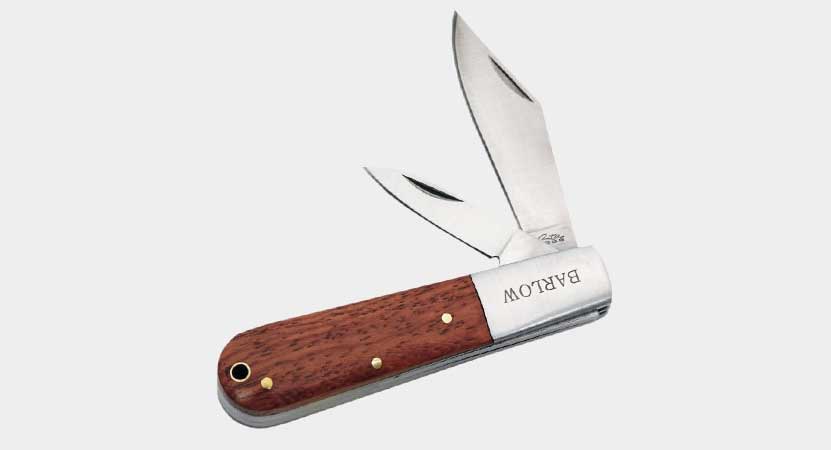
A Blade so Cheap, a Child Could Buy It
We keep mentioning how affordable these were, so let’s take a moment to actually appreciate it. In an ad we found dated November 27, 1920, the price is listed as $1. Just a single dollar. Adjusted for inflation, that comes out to $12.35, which is a perfectly reasonable amount of money adults to spend and for children to scrape together.
A different article puts the price for a single bladed Barlow at 15¢ and a double blade for 25¢ (How many of you forgot what the symbol for cents was?). We can’t adjust those figures for inflation since we don’t know exactly when they’re pulling those prices from, but we can guess, as these are the prices both Huck Finn and Tom Sawyer say you’d need to pay to pick up the genuine article. And if those two guys are espousing the affordability of the blade, we can assume a quarter hasn’t ever been an unattainable amount of money.
Now, in a cruel twist of fate, those early Russell Barlows are valuable antiques, with whole online communities built to connect fans, collect blades, and determine what’s genuine and what’s not. And don’t expect any of those collectors to part with their Barlows for the original buying price, even if you’re kind enough to adjust for inflation. Expect real-world dollar amounts you can’t cobble together from loose change.
Since genuine Russell Barlows aren’t being made anymore, two different kinds of makers have taken over the space. One is the inevitable cheap imitators, making stuff you’d reluctantly pick up in a convenience store with a box of matches and a dubious hot dog. The other is a product the John Russell Company would be proud of. High quality, low maintenance, durable blades that don’t cost the hand you’d hope to use them with. The second kind is the one we believe deserves your attention. As any self-respecting man born at the beginning of last century (and way before) will tell you, a well-built Barlow knife is a worthy investment.
The Barlow Knife
The Barlow knife is a true classic. Used by the likes of George Washington and featured in The Adventures of Huckleberry Finn, the simple folder has a storied history in the United States. Today the Barlow knife is still trusted by men and women who demand a durable blade without bells and whistles. That’s just what you’ll find here with this Barlow from Boker. Featuring a single 440C stainless steel blade, the knife tackles everyday chores with ease. Like most Boker knives, it features the brand’s extended length nickel-silver bolsters and a wider blade perfect for a great many chores. Ideal for transport, the 3 ½” (when closed) pocket knife slips easily into your front pocket while the durable build means you can rely on it for years to come. Buy

